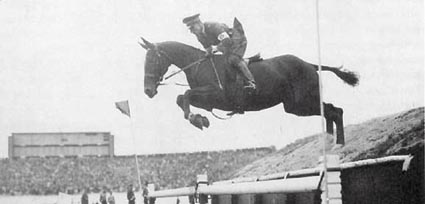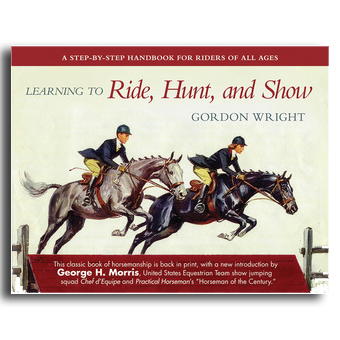 Writing around 50 years ago, Gordon Wright sounds uncannily like the most ‘with it’ behaviourist theorists of today. Consider this advice in his classic book, ‘Learning to Ride, Hunt, and Show’.
Writing around 50 years ago, Gordon Wright sounds uncannily like the most ‘with it’ behaviourist theorists of today. Consider this advice in his classic book, ‘Learning to Ride, Hunt, and Show’.
“The horse owes most of his aptitude for training to memory. This is something for the rider to bear in mind at all times. Every time the horse is ridden, his ‘training’ begins all over again. While it takes time to un-school a well-schooled horse, every small disobedience on the part of the horse which goes unpunished is helping to un-school or to sour him… Because we do make use of the horse’s memory in training him, the rider must be consistent. Decide on what you want from your horse, and insist on getting it… The rider should take care to differentiate between fear and stubborn resistance on the part of the horse. When the horse is fearful, he should be reassured; when he is offering wilful, stubborn disobedience, he should be punished. But one thing for every rider to remember is – Finish the job. No matter what it is you start out to do on a horse, from demanding a good, flat-footed walk to negotiating a jump of any size, once you have asked him to do it, don’t stop until the horse has yielded to that demand.”
“It is true that this sometimes takes every ounce of courage the rider has at his command; but to give up before the job is finished is to ask for great trouble later on…”
“REWARD AND PUNISHMENT: The horse is trained through one system which is called the system of reward and punishment. I don’t suppose there is anything in the entire realm of riding which is more misunderstood. Reward is not confined to feeding your horse the sugar and carrots which he unquestionably enjoys receiving. Punishment is not necessarily the application of spur or whip to his sides. Reward is lack of punishment. When the rider’s legs close against his horse, asking him to move forward, that is punishment. When the horse obeys that command, the legs relax. That is his reward…”
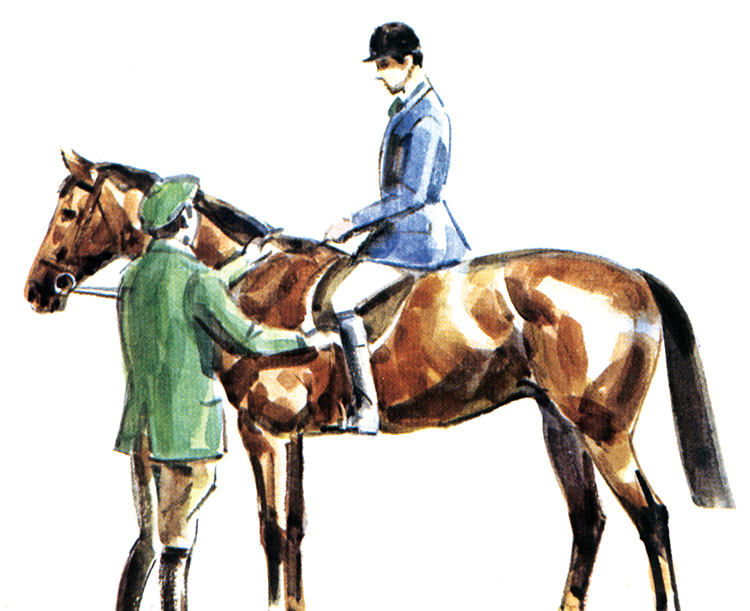
“Riders are often seen caressing horses which are completely insubordinate and disobedient. On the other hand, riders who do not realize the amount and degree of punishment inflicted on a horse through bad or jerky hands, through legs that squeeze a horse’s sides asking for an increase in the gait while at the same moment the hands exert a stronger and stronger pressure on his mouth asking for a decrease in the gait, are guilty of constantly punishing a horse who is doing his best to obey. One extreme is as bad as the other. Both extremes will result in sour, disobedient horses…”
“A horse is trained through a system of reward and punishment. So don’t reward a horse who has disobeyed, and don’t un-wittingly punish the horse who is trying to obey!”
“Punishment should be inflicted immediately after a disobedience. The horse is incapable of associating reward and punishment with an act of obedience or disobedience unless such reward or punishment is given immediately. Even a minute late is too late.”
“And last, but certainly not least, let the rider bear in mind that punishments are rarely necessary. Most forms of disobedience on the part of the horse come from the rider’s inability to convey his desires to his horse. All horses like carrots and sugar, but considerate treatment on the part of the rider is something they like – and respond to – even more.”
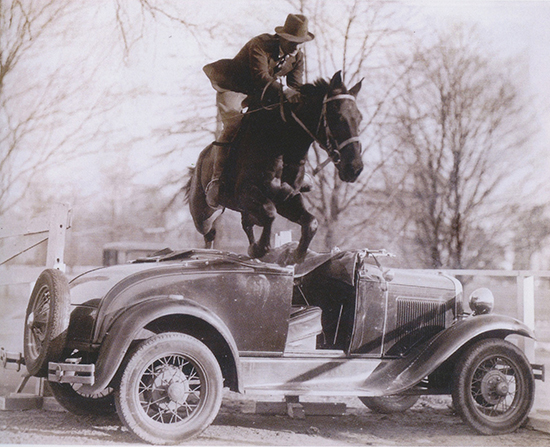
Gordon Wright riding Sunny in the 1950’s
Not bad for a rodeo cowboy turned jumping trainer?
Actually Gordon Wright’s star pupil, George Morris casts doubt on that romantic western origin:
“Gordon Wright was originally a Jewish guy from the Bronx, New York.”
Not a cowboy…
“No but when he was young he went West and became a cowboy in Utah I think it was. In 1927 he came with the rodeo in Madison Square Garden and won some prize-money. I think he was born in 1903, so he would have been 24 then, but he said to himself, ‘I’m crazy, I’m, going to get banged up doing this’. He had a mind like a steel trap.”
“He was probably the smartest man I have ever known; he was like my surrogate father. He said to himself, ‘this is for the birds, I see these people in New York City, they want to go foxhunting, they want to show, they want to ride. I’m going to get into the horse business that way’. So he settled down outside New York City and opened a riding stable in Westchester County.”
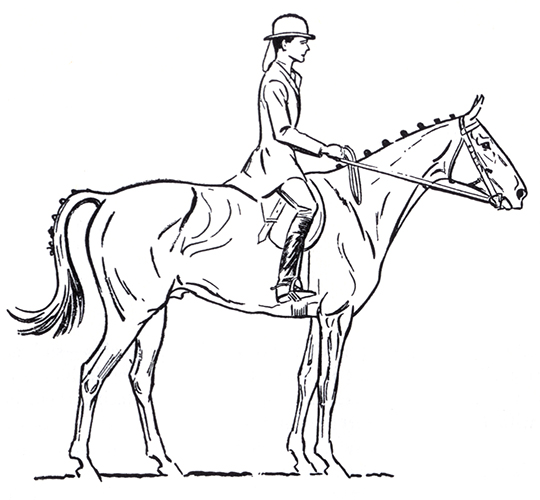
Shown above is the correct position of the rider (please note that essential item of attire, the lanyard) from the book: Learning to Ride, Hunt, and Show
Wright established a horse business in the old State Trooper barracks in New Rochelle. By the 1930s he moved his establishment to Saxon Woods in White Plains, later renamed Secor Farms, and remained there for some four decades, running innumerable club and recognized shows, training hundreds of horses and riders of all ages and degrees of skill, and earning recognition for his own riding skills on such jumpers as Bartender, Sonny and Lew Dunbar as well as the brilliant show hunters Dalchoolin and Naute Mia.
Wright produced more winners of the prestigious Maclay trophy for jumping equitation than any other trainer of his era; his pupils included Archie and Hugh Dean, Bill Steinkraus, Victor Hugo-Vidal and George Morris. Star pupil George remembers the time well:
“Through the thirties, Gordon Wright developed on his own, his riding style. He’d been a bronc rider, and at that time was quite self-taught though he did go up to Jimmy Wofford’s father, at West Point, once a week. He would tell the story that Colonel Wofford would say ‘Wright, get your heels down’ and the next week, he would go for his lesson with Wofford, and he would say, ‘Wright, get your heels down.’ So he probably had some formal training, some of that Fort Riley influence through Colonel Wofford.”
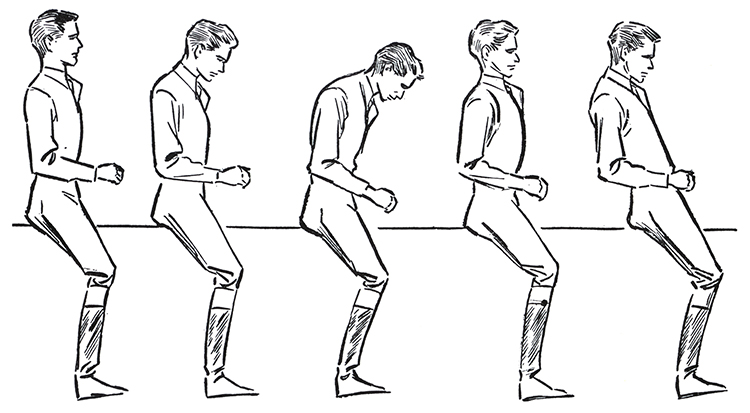
Now let’s look at ‘Common Distortions of a Good Position’, recognize anyone? 1.Upper body in correct position; 2. What happens to the upper body when the eyes drop; 3. Careless position, a roach back; 4. Too stiff and tense; 5. Buttocks tucked under, knees come up, security is lessened.
Wright volunteered for the cavalry during World War II and graduated at Fort Riley, where he remained as an instructor until the Horsemanship Detachment was disbanded. Again, let George tell the tale in his inimitable way:
“He was the oldest person to enlist at Fort Riley, he was in his late thirties, early forties by then. He became an instructor at Fort Riley. In my opinion the people that came out of that school: Billy Steinkraus, Cappy Smith, Gordon Wright were fabulous, fabulous horsemen.”
Harry D Chamberlin – he brought the techniques of the French and Caprilli to the United States
“General Chamberlin, of Fort Riley, wrote many books. My bibles were Chamberlin’s books. People in Europe now are riding in a softer school with lighter ways, they are riding Chamberlin. See Marco Kutscher, that’s Chamberlin. Rodrigo Pessoa, that’s Chamberlin – that’s what he advocated. That was where Gordon really had his formal education, at Fort Riley.”
“Gordon was a born and gifted teacher. He was a horseman’s horseman, a cowboy horseman, he smelt horse, he thought horse, so he put all of this together, and as I say, he was an ingrained natural teacher. After the war he came back to Westchester County – about that time, Billy Steinkraus rubbed shoulders with him. He was one of Billy’s great mentors, Cappy Smith, another Fort Riley professional was Billy’s big mentor. In the mid-forties, Gordon came back to Westchester Country and ended up owning a place in White Plains. I ran into him in 1950.”
“At that time riding clubs were very fashionable, the Oxbridge Club, the Fairfield Club, the Pasadena, the Flint Ridge Club and the teaching was adequate but not great at these clubs, so a lot of the better riders at Oxbridge and Fairfield in a very clandestine way sneaked down to White Plains to have lessons with Gordon, because he was ‘it’. He was the premier teacher in the country.”

FLYING CHANGE OF LEAD: When moving from a right lead to a left lead, the following aids are used to effect a flying change after the horse is collected: 1. The left indirect rein is applied in front of the withers; the right rein is a direct rein and passive. 2. The right leg becomes active, displacing the horses haunches, forcing him to take the left lead.
Just the man Mrs Morris chose to send little George to:
“In those years, Gordon’s students would be the top six in the Maclay class every year at the Garden. In 1950, I was 12, and I maybe wasn’t progressing as well at Oxbridge as I would have liked, so my family decided on the sly to take me to Gordon Wright. At that time, I’d lost confidence jumping. I’d been over-faced. I loved riding and I wanted to ride but I was afraid. So I had to go down to him… Gordon taught a lot at the standstill, and a lot at walk and trot, a lot over cross rails, and got my confidence back.”
“In a few months he said to my mother: “Mrs Morris… tennis is a wonderful game.” But I liked riding so I stayed. Then a couple of months later he said, “Mrs Morris, he is built for swimming…” I persevered and I wouldn’t give up, and started to come through a little bit. I started to have some success at the shows, he said “Mrs Morris, I think he might make something…”
“One of his early books is ‘Learning to Ride, Hunt and Show’. It’s one of my bibles, a short book but a brilliant book for the jumping rider, not an elaborate dressage book. He touches on the rudiments of half pass, shoulder in, but it is really geared to jumping fences on galloping horses. He wrote in a copy of that book for me, way way back in the 50’s, ‘to the shortest who will grow up to be the tallest’, which was very interesting because I wasn’t a talent and I was the tortoise versus the hare… with his great confidence building, with his technical training, I came through. Also at that time I bumped into a very very good horse for the hunter division and the equitation division, and I won the two prestigious equitation finals in Madison Square Garden under Gordon’s tutelage and I give him all the credit. I was 14 and no one had won one final let alone both, at that age, then or since. Of course, now it’s bigger with more people, and it would be harder to do.”
“After those two wins I was virtually out of the junior division and I started riding jumpers quite early because I was in something of a vacuum, I couldn’t continue with the equitation and the hunter classes. So I kept studying with Gordon into the de Némethy era when I got very serious with Bert after the Stockholm Olympics, and I didn’t continue having instruction from Gordon but I stayed very close to him. Then in the early sixties when I turned professional, Gordon started with me again and started me on the clinic trail, he taught me about teaching.”
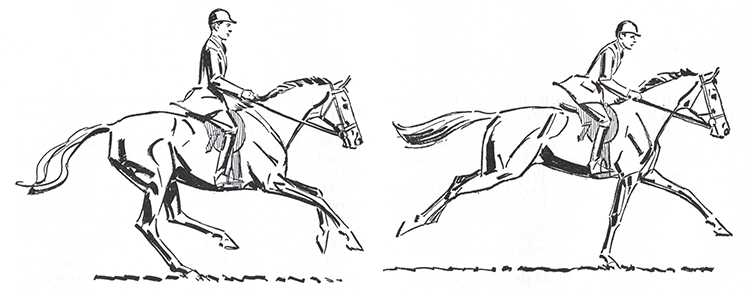
Left: A CORRECT POSITION AT THE CANTER – The rider using a Three-Point Contact, with the crotch deep in the saddle, the inner bones of the knees and the calves of the legs coming into contact with the saddle; Right: A CORRECT POSITION AT THE GALLOP – The rider using a Two-Point Contact, which consists of the inner bones of the knees and the lower part of the legs, the weight carried in the heels not the stirrups.
“I aspired to teach because of Gordon, it was a hero-worship. I was a very good rider but I wasn’t a Ludger (Beerbaum), or a Necko (Nelson Pessoa), I wasn’t that naturally a rider, but I felt I was a better teacher, and this I attribute to Gordon. I learnt his techniques, and to this day, in many ways, I copy him. We stayed very close until his death. He was a great supporter. I have to look back to him, even more than Bert de Nemethy who in another stage was another father-figure and Bert polished me and showed me the international ropes, took me down the trail to Aachen and the Olympic Games, he was the college professor, but I have to look to Gordon as my initial mentor, such a fabulous man, a person who read people, he was not only a great horse whisperer, he was a people whisperer. He read people like no-body I’ve ever seen – he just was a genius.”
Let’s look at the little book George describes as ‘a bible’, Learning to Ride, Hunt and Show. Originally published in 1958, the revised in 1966, for all the absolutely up-to-date basic theory, it still speaks of an earlier era of elegance and all round horsemanship. There is a chapter on The Horse, that covers everything from conformation to stable vices, there is even a separate chapter (by Mrs John J. McDonald) on Riding to Hounds, and wonderful illustrations by Sam Savitt that capture the elegant simplicity of the message. And that I hope is the message of this series of articles. Why do Americans ride so well over showjumps – so well that the good European riders are all riding in an American style? Because they learnt from day one that you master the first step perfectly before you move to the next. You don’t say, oh well you can’t really ride in a forward seat, we’ll work on it next week, now let’s jump. No. You can’t master forward seat, forget about jumping until you can.

1. In the third stage of elementary jumping, the rider is permitted to canter into a cross-rail, which means a three-point contact. The rider is in a three-point contact, cantering toward the jump. The approach: An average distance of from five to twenty yards away from the jump. (a) Eyes are on a point. (b) Hands move halfway up the horse’s crest or mane. Rider places the weight of the upper body on the hands and crest. (c) Rider’s weight goes into the heels, not into the stirrups. Contact is maintained through the inner bones of the knees and the calves of the legs, in light contact with the horse’s sides. The rider is in the saddle with a three-point contact. 3. Take-off: The rider holds this position, and the thrust of the horse throws him forward. The rider doesn’t “jump.” He waits and, as the horse jumps, the rider is thrown forward and upward by the thrust of the horse The hip angles close, the knee angles remain open. 4. The flight. The rider holds his position. 5. The landing. The hip angles open, knee angles close, the rider starts to sink down-not sit down-in the saddle, the flexed-in ankles and inner bones of knees acting to absorb shock of landing. The rider resumes contact with the horse’s mouth and continues the canter in the three-point contact.

1. The rider is at a canter, riding with a three-point contact, the crotch deeply in the saddle, as he approaches the jump. At the approach, the rider’s hands move up halfway on the horse’s crest, the weight of the upper body and the hands is on the horse’s crest; the weight of the lower body is in the heels; and the rider maintains a three-point contact, with the crotch in the saddle, the inner bones of the knees and the calves of the legs in light contact against the horse’s sides. 3. The take-off. As the horse takes off, he throws the rider forward and upward. The hip angles close, the knee angles open, the ankle angles stay closed, the heels are driven down, carrying the rider’s weight. 4. The flight. The rider holds his position. 5. The landing. The hip angles open, knee angles close, the rider starts to sink down-not sit down-in the saddle, the flexed-in ankles and inner bones of knees acting to absorb shock of landing. The rider resumes contact with the horse’s mouth and continues the canter in the three-point contact.
And let it be noted that this position has to be worked on all the time. On the day he went out to win an Olympic gold medal, William Steinkraus spent half an hour on the lunge. The truth is there is not one rider in any Australian elite squad who would not benefit from regular lessons on the lunge… but of course this is not very romantic, not exciting like lessons from Ulla Salzgeber, or Jamie or Heath or Wayne, or whatever expensive instructor is going to wave the magic wand. And you’ll never guess how the Ullas of this world got to where they are…
Now let us have a look at what Gordon Wright calls, Elementary Jumping illustrated above. Once again, if our elite eventing and jumping riders rode like this over a fence they would be riding much better, they might even aspire one day to ride like the rider in the sequence illustrated below. This, mark you, is only what Mr Wright calls – Intermediate Jumping! Gordon Wright also adapted the Fort Riley manual for civilian use, in The Riding Instructor’s Manual. At the risk of labouring the point, the important thing is the attitude to learning and teaching. Teaching is a serious business.
These are Gordon Wright’s Commandments for a Teacher: A Good Teacher
1. Is sure of his subject
2. Seeks to create development in each student
3. Looks for new experiences and problems
4. Avoids sarcasm and never ridicules a pupil
5. Should be enthusiastic about learning
6. Inspires confidence
7. Should prevent physical fear, since it is impossible to learn with it
8. Should simplify words and actions
9. Should not be a perfectionist, because this is difficult for most students to live with
10. Should be a demonstrator and a trainer, thus inspiring the pupil to make continual progress
11. Should be especially aware of appearance while riding
12. Should have a specific daily lesson plan.
And this I love. It is dedicated to one of my very closest friends (no prizes for guessing who…) “The demon of the professional instructor’s life is definitely the telephone. Make it clear that lessons will not be interrupted by a telephone call. Keep specific times during which appointments and cancellations will be made, and then hold it at that. During the working day, it is far better to ignore the ringing telephone than to mess up the schedule with frequent interruptions.”
This is what we miss in Australia. For all our flair and natural affinity with the horse, for all the abundance of not-so-expensive horses and a climate that makes competing and keeping them relatively affordable, we lack that reverence for learning, that fierce determination to perfect every step before moving on to the next.
But it is never too late to learn….
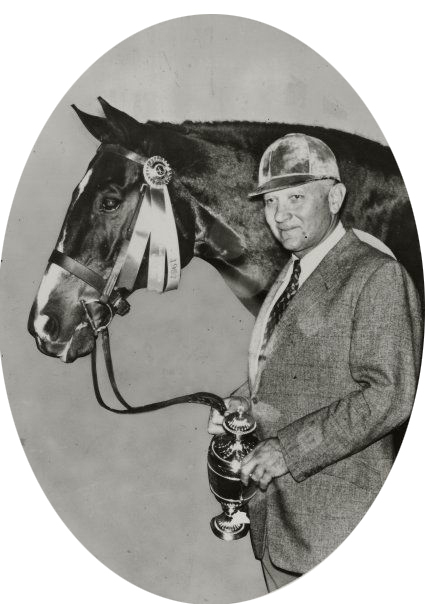
Related Articles:
FOUR SHOWJUMPING MASTERS – Part 1: George Morris

